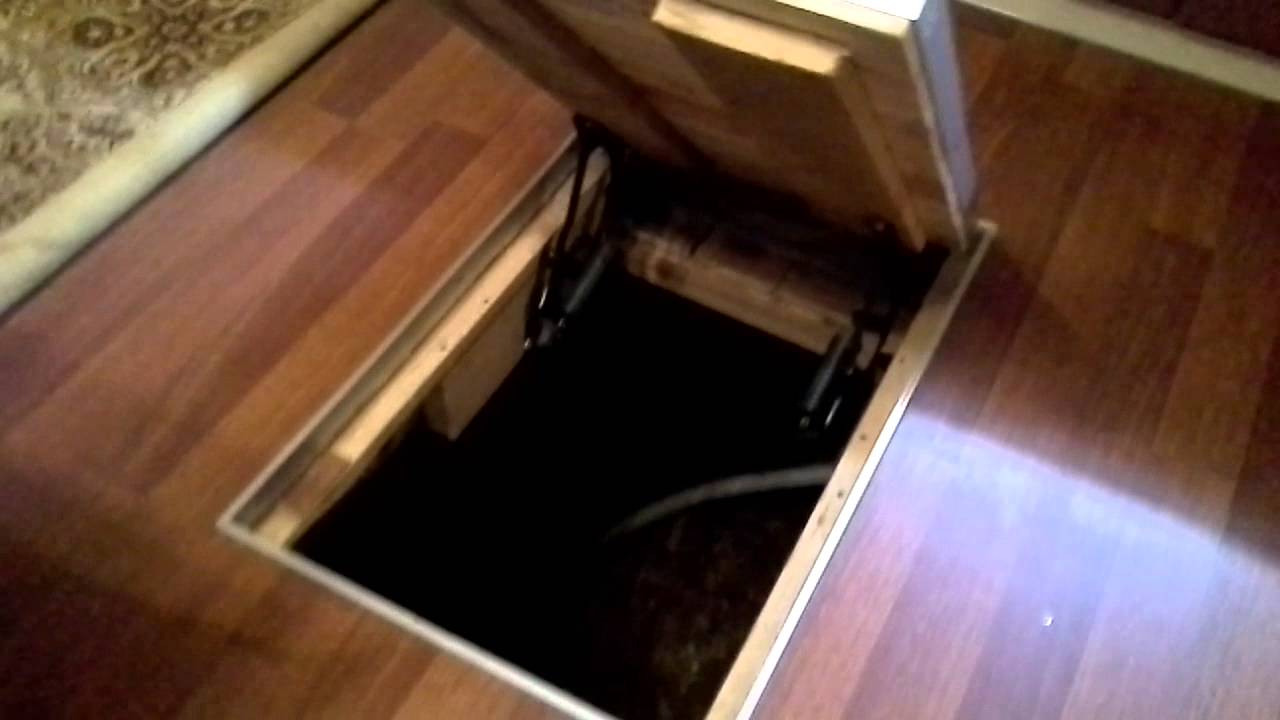We make floors on the ground: the procedure for the construction of wooden and concrete bases
During the construction of garages, cellars, residential premises, mainly in regions with a warm climate, wooden or concrete floors are arranged on the ground. At the same time, the type of underlying soil, which must be necessarily dry, matters. If the groundwater level lies close to the surface, then creating a powerful waterproofing will cost more than installing a floor of another design using beams or floor slabs. In this case, the main advantage of the floors arranged on the ground, the cost-effectiveness of their construction is lost. In any case, the installation of the floor on the ground begins with work on the thorough preparation of its foundation.
The scheme of the concrete floor on the ground
A properly laid floor on the ground consists of several layers, the number and thickness of which can vary depending on the individual characteristics of the building area.
Builders most often use the following layout of “layer cake”:
- priming;
- river building sand;
- expanded clay or crushed stone;
- waterproofing;
- screed made of lean concrete;
- vapor barrier;
- insulation material;
- reinforced concrete screed;
- substrate;
- finish flooring.

So, we will consider how to carry out these construction works.
Foundation preparation
Work on the installation of a concrete floor over the ground begins with leveling the base, while using a laser or optical level. In the process of leveling determine the zero mark, the relief, as well as the surface level of the finishing floor. During the leveling, the amount of forthcoming excavation work becomes visible.
After leveling, the soil base is carefully compacted, and if the soil is loose, crushed stone is added. This procedure reduces the likelihood of subsidence of the soil, which provokes cracking of the floor.
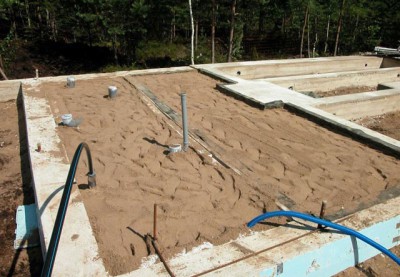
A layer of expanded clay, crushed stone or gravel is poured over the sandy “pillow”, which is also compacted.
Important! For tamping the soil, sand cushion and gravel layer, rammers or heavy rollers are used.
Base waterproofing
The main task of waterproofing is to prevent moisture absorption by the concrete screed of the floor, as well as to cut off the capillary rise of soil moisture. The waterproofing layer is performed by roll bitumen materials or polymer membranes.
Sometimes thick polyethylene is used for these purposes, but it is very difficult to avoid damage to this material during further work. Cloths of waterproofing material are lapped, fixing the edges with construction tape. Be sure to bring the material to the walls to a height of 15-20 cm. Surpluses are cut off after finishing the screed
Pouring a rough concrete screed
In their professional language, builders call a rough concrete screed a layer of “lean concrete”. This layer serves as the basis for laying vapor barrier material. In some cases, lean concrete is coated with bitumen, which plays the role of waterproofing.The rough screed is poured with concrete of class B 7.5 or B 10, to which fractional gravel is added, the grain size of which varies between 5-20 mm.
M50-M75 brand mortar is used to create a rough screed if the soil was compacted with a gravel layer without waterproofing. The thickness of the layer of "lean" concrete should be 40-50 mm, while horizontal differences are allowed, the height of which cannot exceed 4 mm. Track this parameter using a two-meter level
A layer of vapor barrier material is laid on top of the rough concrete base, which is used as polymer-bitumen membranes, as well as polyvinyl chloride membranes, which have amazing durability, since they are completely not subject to decay. In some cases, the vapor barrier layer is made of plastic film, however, high-quality floor protection is not guaranteed.
How to insulate such a floor?
Before starting work on insulation, it is necessary to make a thermotechnical calculation of the floor. This will allow you to choose the right insulation material, calculate the minimum thickness of the insulation. Mistakes in this topic cannot be made, since during operation of the room there will be a problem of the cold floor and significant heat loss.
Floor insulation on the ground is carried out using materials such as polystyrene foam, extruded polystyrene foam, mineral wool.
Laying Concrete Concrete Screed
Finishes the floor cake on the ground with a layer of reinforced concrete screed, on which the final floor covering is laid.
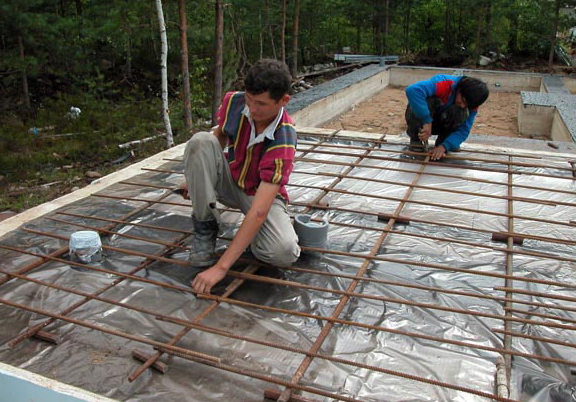
Next, pour the prepared concrete mixture by preparing a sufficient amount of mortar. With large volumes of pouring, it is more profitable to rent a concrete mixer.
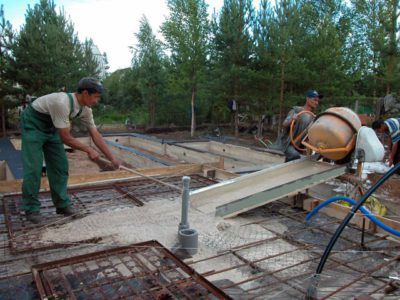
The device of the wooden floor on the ground
What is the difference between the composition of the floor on the ground in this embodiment? The main difference lies in the arrangement of a warm, ventilated underground, the height of which is usually 15-20 cm. This value cannot be reduced, as the air circulation worsens. At higher underground heights, heat loss increases.
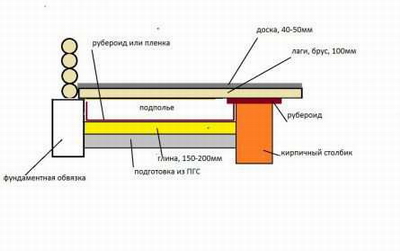
The technology of laying a wooden floor on top of the soil consists of the following steps:
- preparation of the soil base (leveling, adding crushed stone, tamping);
- pouring a layer of "lean" concrete;
- installation of lighthouses and determination of locations for brick tables;
- laying concrete screed on the underlying concrete layer under the bedside tables;
- the device of bedside tables made of solid brick;
- two layers of roofing material with a small overlay are laid on the surface of the cabinets;
- on top of the waterproofing, wooden gaskets impregnated with an antiseptic are placed;
- floor insulation is carried out by adding slag along the outer walls of the underground, while the thickness of the layer can reach up to one meter;
- laying timber (log) on the bedside tables made of bricks;
- fastening to the logs of the floorboard with nails;
- leveling the wooden floor with a planer if necessary;
- putty of the locations of recessed hats of nails.
If you want, it’s quite possible to arrange flooring on the ground with your own hands. The main thing is to purchase materials, tools and stock up on time for the high-quality implementation of all technological stages of work.


